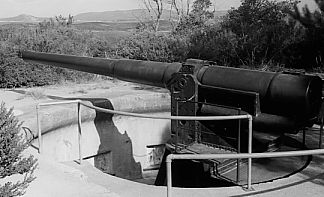- Author
- Francis, Richard
- Subjects
- History - general
- Tags
-
- RAN Ships
- None noted.
- Publication
- June 2003 edition of the Naval Historical Review (all rights reserved)
19th century Australia was perceived to be coming under increasing threat from foreign powers in the lead up to WWI, and efforts were made to fortify strategic ports, some of which are less well known today. In 1791 Captain George Vancouver RN (he had previously been a lieutenant under Captain Cook) claimed the southern part of Western Australia for the British Crown. As he explored along the coast, he discovered one of the world’s finest natural harbours and named it The Princess Royal Harbour, and the Sound after King George III.
During the 19th century, the loss of this strategic port to any enemy naval squadron was recognised as a potential threat to the security of Australia. Consequently all the Australian colonies agreed to proportionally pay for the construction of a fort with the Imperial British Government supplying the guns. The fort was opened in 1893, the first federal defence of Australia – and today called the Princess Royal Fortress.
This was not a grand fort of battlements with towers in stone, for this was the age of protection by concealment. Two separate gun batteries were dug into the hillside of Mount Adelaide – Fort Princess Royal (2 x 6″guns) and Fort Plantagenet (1 x 6″gun). The Albany Barracks housed a small permanent garrison to man the guns.
From 1893 until 1956 the guns of King George Sound maintained their role as a deterrent, never firing a shot in anger. It was neither age nor the enemy which defeated them, but the dawning of the missile era. In 1956, coast defences throughout the Commonwealth were closed down, dismantled and generally destroyed. The buildings were later used as schoolrooms, migrant hostel and a holiday camp before becoming vacant and succumbing to vandalism. A restoration project by the City of Albany now houses five museum display areas.
The original guns installed in 1893 were 6″ BL Mk 3 en barbette, with garrison carriages and sliding platform recoil on a revolving ring. These guns had an effective range of 5.25 miles (8.4km) across the Sound. In 1939 these guns were replaced by 6″ Mk V QF(C) guns originally mounted at South Head (now HMAS Watson) Fort in Sydney and the effective range increased to 8-10 miles (12.8 – 16km). Finally, the most modern guns installed were 6″ Mk VII from Leighton in Perth, WA which were formerly mounted at Arthur Head in Fremantle. None of these guns were ever fired in anger throughout their service.

Also in the Fort precinct was a Signal Tower and Lookout used by the US Navy when part of the submarine fleet was stationed at Albany during WW2.
On 24 October 1914 the first transports gathered at Albany to take the first large contingents of Australian and New Zealand troops to the war theatres of Egypt and Europe. A large formation anchorage was conducted in the magnificent natural harbour of King George’s Sound. Its departure had been delayed owing to the uncertainty of the location of the German Asiatic Squadron (Admiral von Spee). The main convoy weighed anchor to proceed on 1 November, preceded by the escorting cruisers, HMS Minotaur and HMAS Sydney, with HMAS Melbourne following. Twenty eight troop transports spread out in three lines abreast, joined by two more sailing from Fremantle on 3 November. Sailing formation revealed Minotaur five miles ahead of the convoy, Sydney 4 miles to port and the Imperial Japanese cruiser HIJMS Ibuki an equal distance to starboard, and Melbourne bringing up the rearguard. Halfway to the Cocos Islands, the senior officer in Minotaur found it necessary to issue stern orders to the transports to maintain station and to extinguish lights at night (one Digger described the larger ships as ‘twinkling like floating hotels’).
The remarkable engagement between Sydney and the German light cruiser Emden took place on 9 November off North Keeling Island in the Cocos, averting what might have been a monumental disaster had this strategic troop convoy come under hostile fire in the open Indian Ocean.




